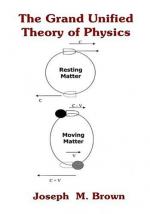|
This section contains 775 words (approx. 3 pages at 300 words per page) |

|
Many physicists have long argued the conceptual simplicity of the Universe, and have sought to explain its workings in a manner consistent with that simplicity. In the late sixteenth century Italian astronomer and physicist Galileo Galilei demonstrated that mathematical laws describe Earthly physical phenomena. In the early seventieth century English physicist and mathematician Sir Isaac Newton proved the universality of those physical laws. Ever since, the history of theoretical physics has shown an evolution towards greater simplicity, an evolution towards a description of nature in terms of fewer, and more logically coherent, ideas.
This unification of physical theory is largely due to the realization that a few unifying principles apply to nature as a whole. These principles, which transcend all branches of physics, point to a concise fundamental structure of the world, and can be expressed simply: nature is both economical and symmetrical.
Open...
|
This section contains 775 words (approx. 3 pages at 300 words per page) |

|


